Disclosure: Meeple Mountain received a free copy of this product in exchange for an honest, unbiased review. This review is not intended to be an endorsement.
Did you know that New York City has five different zoos? I certainly didn’t.
Life in the big city has its merits: you’re surrounded by interesting people, there’s always something to do, and everything you could ever want or need is within just a few miles of your home. Well, almost everything. All of that industrialization and build-up comes at a cost. The rolling fields of grass and trees have given way to towering skyscrapers and housing developments. Sometimes in the midst of all of that concrete and steel you want to get in touch with nature again, to see and experience the world’s natural beauty, to step outside of the day-to-day experience. Sometimes you need a trip to the zoo.
Overview
In New York Zoo, the players take on the roles of developers as they work to construct animal parks and fill them with various animals and Attractions. Each player begins the game with an empty zoo board and a couple of animals. On their turn, they will either choose from a selection of polyomino tiles to add to their boards as animal Enclosures or choose from a selection of animals to add to their boards in an effort to fill their already existing Enclosures.
Along the way, certain animals will breed and produce offspring which are added to existing Enclosures. When an Enclosure is filled, the animals present on it are removed and the player can then add an Attraction tile to their board. And this is important because the goal of the game is to be the first player to fill in your board entirely and those Attraction tiles will help you fill in the holes left by your Enclosure tile placements. Animal breeding happens after tile/animal selection and placement, so it may happen that multiple players will fill in their boards as a result of this. If this occurs, the tie is broken by whoever has the most animals remaining.
Of course, this is a high level view of the game. If you’d like to see how the game is played, then continue reading. Otherwise, feel free to skip ahead to the Thoughts section.
Setup
To begin setting up for New York Zoo, the game board is laid in the middle of the table and the various Enclosure tiles are arranged into separate piles based on their color. Then the Enclosure tile spaces alongside the game board are filled with the appropriate tiles beginning with the smallest and working up to the largest icon, which correspond to the tile colors, so that each Enclosure tile space will have a stack of 3 tiles at the beginning of the game. The Elephant pawn is placed next to the space marked with the red dot. The Attraction tiles are arranged by type and set off to the side for the time being.

New York Zoo comes with different player boards for the different player counts. Once you’ve determined your player count, choose a starting player. That player receives the board of the correct type that has the number 1 printed on it. Each other player, in clockwise order from the start player, takes the next highest numbered board of the correct type. Each player board has 2 different animals printed on it. Players receive 1 of each of these animals which they will place into one of their empty houses. The remaining animal meeples are stored close by in the handy tray that is provided. Then you’re ready to play.
On Your Turn…
On your turn, you must move the Elephant around the board as your main action. The minimum spaces it must move is 1 and the maximum it can move is based on the player count (4 spaces, for instance, in a game with 2 players). If you stop the Elephant next to one of the Enclosure tile spaces, you will take the top Enclosure tile and add it to your player board. Or if you stop the Elephant on one of the animal acquisition spaces, you will receive the 2 animals shown and add them to your player board. Once you’ve performed your main action, if you crossed one of the breeding lines printed on the main board, the animal depicted on the breeding line will breed. I will discuss the rules for Enclosure tile placement, animal acquisition, and breeding in their own sections.
Enclosure Tiles
When an Enclosure tile is acquired, it is immediately added to your player board. It can be flipped and turned in any manner that you like as long as a.) the placement of it does not cover up a portion of an already placed tile or b.) any portion of it does not extend beyond the boundaries of the construction area on your player board.
As soon as the tile is placed onto your board, you MUST move at least one animal into the Enclosure. This animal can come from one of your houses or even one of your other Enclosure tiles (as long as moving that animal does not cause the tile it is moving from to become empty). This, of course, means that you cannot add an Enclosure tile to your board if there are no animals that you can legally add to it. A maximum of 2 animals can be added to a newly placed Enclosure, but they must come from different places.

Of note: Every Enclosure tile is made up of a number of squares, each square can only ever hold a single animal, and no Enclosure can ever hold more than a single species of animal.
Animal Acquisition
When ending your main action with the Elephant on an animal acquisition space, you will acquire the 2 animals shown one after the other in an order of your choosing. Once acquired, the animal will be added to one of your existing Enclosures or to one of your houses. If there is no legal space to place the animal, it cannot be acquired. This may mean you’ll only be able to acquire only 1 of the animals shown, but not both. Alternatively, you can forgo receiving either of the animals shown and instead take 1 animal of your choosing from the supply to add to your playing area.

It is possible that adding one (or both) of these animals to your Enclosure tiles might cause those tiles to become full. To avoid duplication, I’ll talk about what to do when this happens in the next section.
Breeding
Breeding occurs for all players simultaneously. When a player crosses a breeding line with the Elephant, they should announce to the other players that a breeding for the specific type of animal will occur once their main action is concluded so that everyone is aware that the breeding is about to happen.
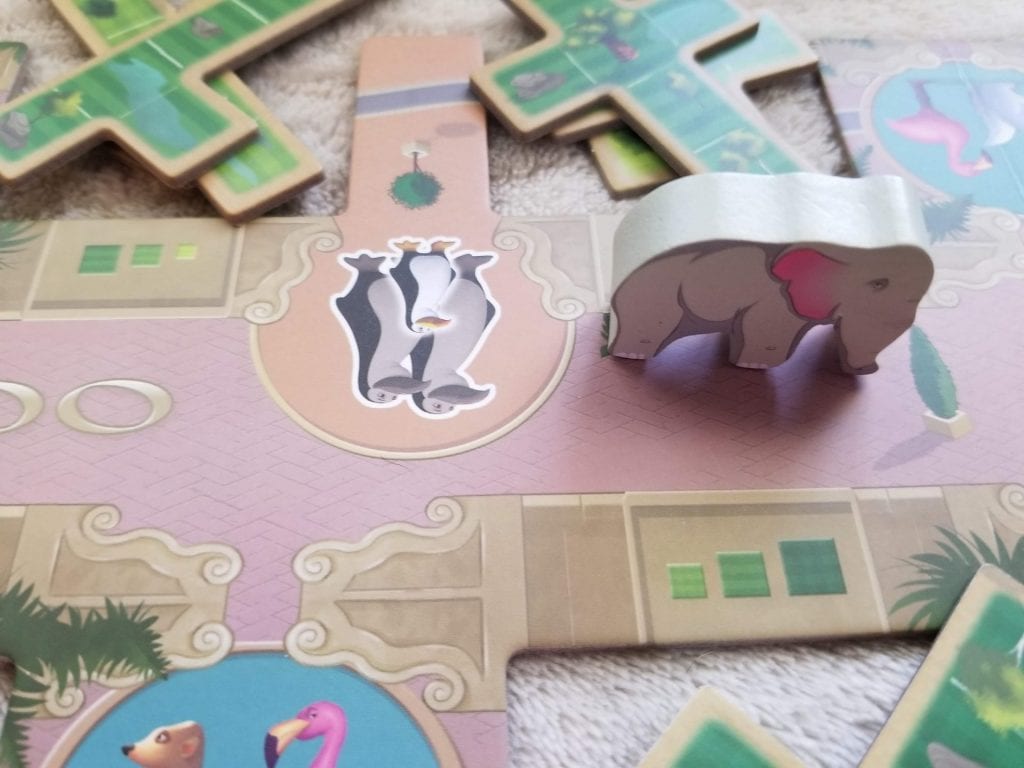
Each player that has at least two of the named animals in a single Enclosure will be able to add an additional animal of the same type to the Enclosure. If they have a second Enclosure containing at least two animals of the named type in it, they may add an additional animal to that Enclosure as well. Only two Enclosures can be added to in this way.* When breeding occurs in an Enclosure, if you happen to have an animal of the appropriate type in one of your houses, you can add that to this Enclosure as well, but only 1 animal can be moved from your houses in this way.
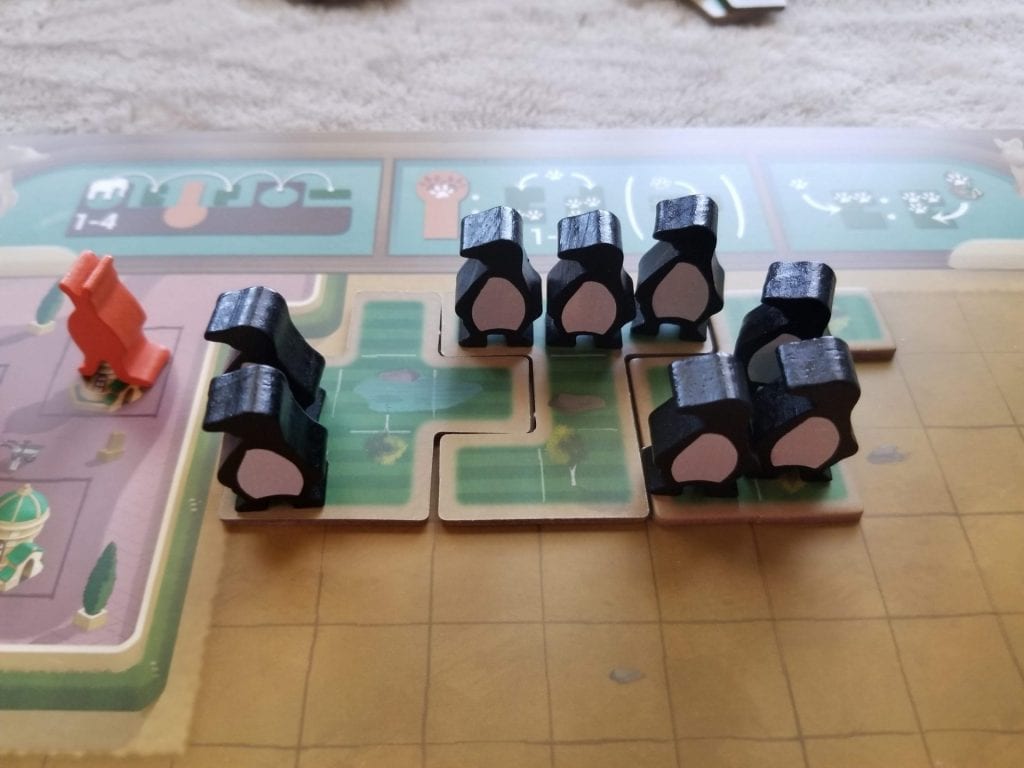
If adding an animal to an Enclosure causes the Enclosure to become full, the player can then empty the Enclosure of animals (storing up to 1 of the removed animals in their houses if they have room) and then choose one of the available Attraction tiles to add to their player board. If multiple players would receive Attraction tiles, they are selected in turn order starting with the player that triggered the breeding.
*In a 2- or 3-player game, at least 1 successful breeding of the specified animal type will trigger an additional breeding in a different Enclosure than any that have been added to so far during the current breeding so long as that Enclosure contains at least 2 animals.
Thoughts
Full disclosure: I am an Uwe Rosenberg nerd. As of this writing I own 38 distinct titles by him. So take that as a confession that I tend to view his creations through rose-tinted glasses. When I find out that Uwe is releasing a new game, I get excited and very rarely am I let down once I finally get my hands on it. So, bear that in mind as you read my thoughts on New York Zoo.
This is usually the part where I would dive right in talking about the artwork and components, but there’s one glaring thing about New York Zoo that really bugs me that I want to talk about first: the theme.
I will be the first to admit that the theme of New York Zoo makes zero sense. Apparently, the city of New York needs 1 to 5 additional zoos to be constructed, stat! Why New Yorkers are suddenly clamoring over themselves for new zoos when they already have 5 is never explained. At first I thought that maybe the “New York” portion of the title suggested New York state, but no, the artwork right there on the box clearly shows the skyline of downtown Manhattan. Furthermore, as zoo developers we are apparently not as concerned about the layout and beauty of our respective zoos or the safety and comfort of the animals, but more concerned with just jamming as much crap in there as we can as quickly as possible.
So, yeah, it should come as no surprise that New York Zoo is another euro-style abstract with a theme slapped on top of it. And that right there is the only negative thing I have to say about this game because, other than the theme, New York Zoo is actually really, really good.
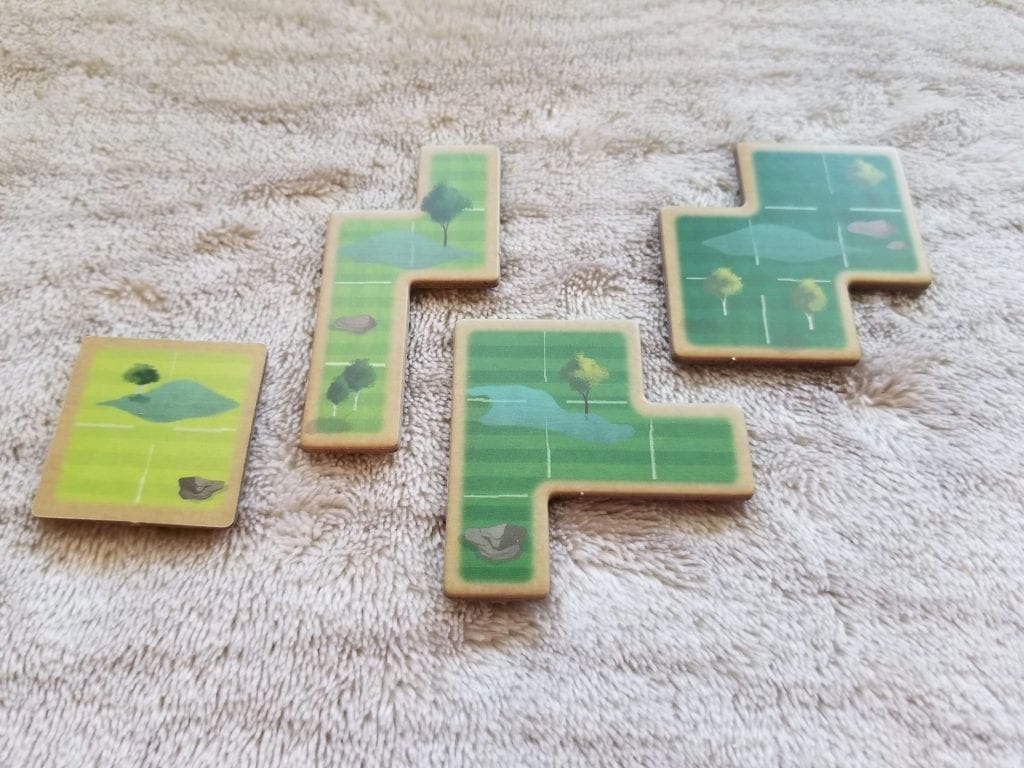
Diving right in, this game looks great. The artwork is stellar and the components are top notch. Felix Wermke’s usage of bold lines, vibrant colors, and cheeky animal illustrations is fantastic. The tiles are nice and thick and the wooden animals are delightful. Even the rule book looks good. I own several titles published by Capstone Games and New York Zoo definitely displays the level of finesse and craftsmanship that I have come to expect from them. Productionwise, I award this game top marks.
But the excellent craftsmanship doesn’t end with the components. A game is more than the sum of its constituent parts. I’ve experienced many games that look fantastic that are fantastically awful to play and I’m glad that New York Zoo isn’t one of them. And, let’s be honest, it’s Uwe Rosenberg. With the exception of a single dud (cough Hengist! cough), he always delivers.
New York Zoo seems fairly straightforward at first glance, but it isn’t until you start playing that you realize just how meaty it really is. It starts with the Elephant. When it comes time for you to move the Elephant you are faced with several critical decisions beyond just deciding which tile you want to add to your board or which animals you want to collect.
Each move of that Elephant pawn is also setting up the turn for the next player in line, so you’ll find yourself trying to calculate which tiles are within their reach and which ones are most likely to help them the least. Do you move the Elephant just enough to keep them from snatching up a tile that would fit into their board perfectly even though it means choosing something suboptimal for yourself or do you leap ahead and grab the thing you really want? Will moving the Elephant trigger a breeding? If so, will you be able to capitalize on it? If not, do you really want to risk triggering a breeding when it may help someone else more than you? These kinds of mental gymnastics become even more pronounced in the 2-player game. If there’s a piece coming up that you want, then you can move the Elephant in such a way to guarantee that your opponent won’t be able to get to it but that regardless of what they choose to do on their turn, they’ll put you within striking distance of the tile on your next one.
In my first game, I became hyper focused on setting up an animal breeding factory. It made me feel exceedingly clever watching my Enclosure tiles fill up each time a breeding occurred, but that level of focus ultimately lost me the game. It’s very easy to get so caught up in the excitement of watching your board fill up with animals that you lose sight of the end goal: filling up your board with tiles. But ignoring animal breeding entirely is also not the way to go. You must have animals to place Enclosures, so you’re forced to maintain a healthy balance between filling up your board and filling up your Enclosures. Uwe Rosenberg is a master at putting his players into these kinds of positions. In Patchwork, for instance, instead of balancing breeding versus expansion, you’re juggling buttons and time. Other games, like A Feast For Odin, have you trying to keep even more plates spinning. In A Feast For Odin you’re having to deal with feeding people, acquiring points, and filling in your board to avoid negative points.
In New York Zoo, Uwe Rosenberg plays to his strengths and it works out wonderfully for the players. It’s a gorgeous game that’s easy to set up, easy to teach, and easy to play mechanically. And it’s also a game that presents a lot of unique challenges along the way. New York Zoo is an excellent game for neophytes and experts alike which is why I have no reservations about recommending it highly. If you’d like to try out the game for yourself, it’s available to play on Tabletopia for free.




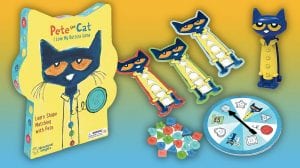
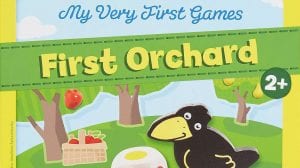

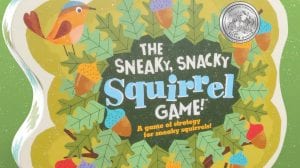




Add Comment